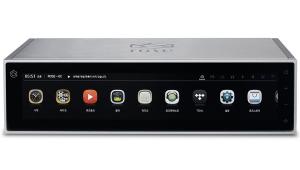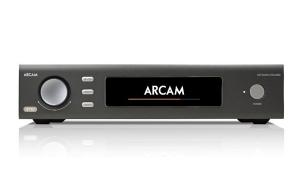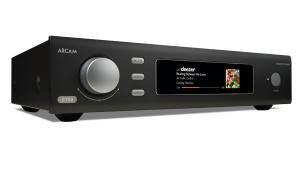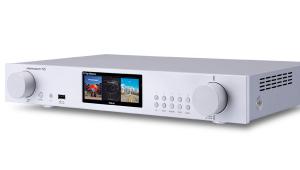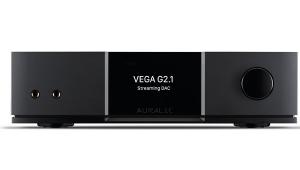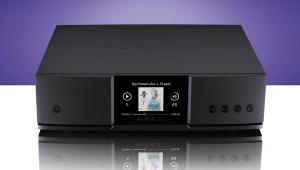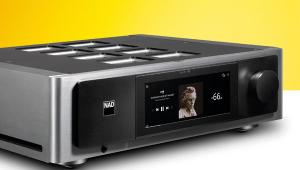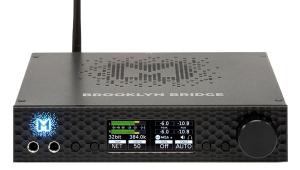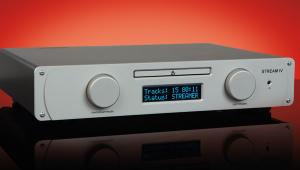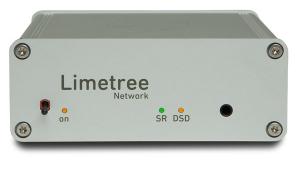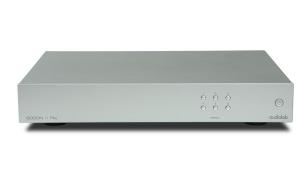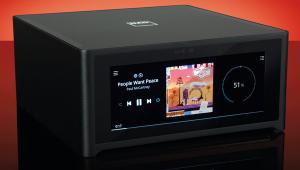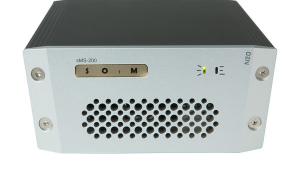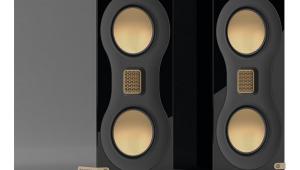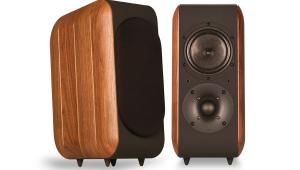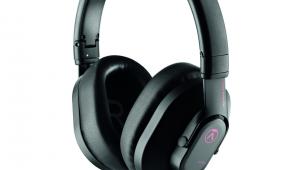Auralic Altair G1
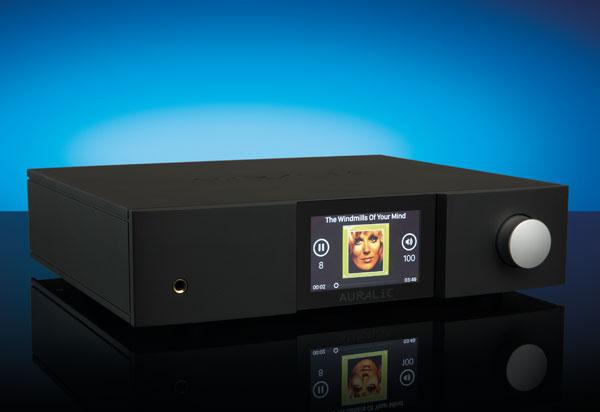
 Such is the similarity in appearance between components in Auralic’s G1 and G2 series, you could mistakenly look at the images accompanying this review and think we’re rehashing something that’s already been covered. Despite the visual similarity, the Altair G1 is new and has a different role to the Aries G1 streaming transport (HFC 441) and Vega G1 streaming DAC (HFC 449). While they are designed to work together or – in the case of the Aries G1 – bring Auralic’s front end to another decoding system, the Altair is more of a standalone front end.
Such is the similarity in appearance between components in Auralic’s G1 and G2 series, you could mistakenly look at the images accompanying this review and think we’re rehashing something that’s already been covered. Despite the visual similarity, the Altair G1 is new and has a different role to the Aries G1 streaming transport (HFC 441) and Vega G1 streaming DAC (HFC 449). While they are designed to work together or – in the case of the Aries G1 – bring Auralic’s front end to another decoding system, the Altair is more of a standalone front end.
This means that it is specified a little differently to its G1 brethren. As well as a UPnP streaming module that can be used wired or wirelessly, it offers four digital inputs; an optical, coaxial, USB and AES, that can be outputted as a line-level signal or adjusted by the built-in volume control to allow it to function as a preamp.
The biggest operational difference is the return of a feature that has been absent on G1 components so far. As well as a USB-A port on the rear that can accept a hard drive, the Altair G1 has an internal bay for a 2.5in drive, allowing it to function as a complete digital player with built-in library. The reason why this is so useful is that the Lightning control interface is able to act as its own server, rendering the music library in a manner that is pretty much indistinguishable from using a good-quality external server.
In order to ensure that the Vega G1 maintains its status as the leading decoder in the range, the Altair G1 uses an ESS9038Q2M DAC of a slightly lower spec than the more costly one found in the Vega and forgoes the ORFEO Class A output module and jitter reducing technology – although it does retain the femto clock, which is something of an Auralic speciality. The company feels that the G1 is still more than capable of seeing off any rival competition at the price, however.
There are some other omissions from the specification, one of which has been rather cleverly bypassed and another that is worth taking into account. The first is that it doesn’t come supplied with a remote handset (one is available as an option). If you head off into the expansive menu system (more of which in a bit), though, the Altair has a function where IR commands can be assigned to buttons on an existing handset. As many are littered with buttons that have no direct function to the device, which can be used for this task, this feature works like a charm.
The other is that unlike the original Altair, there is no USB digital out – or any digital output at all for that matter. This means the Altair can’t be directly connected to a Vega G1 or any other DAC. There is an oblique upgrade path in the form of moving it to a second system and using it as the Lightning Server for a Vega (which is not so equipped). Of course, if you are looking for something to operate solely as a transport, the Aries G1 fills that role admirably.
The flexibility of the Altair is deeply impressive. As well as the learning IR system, menus contain adjustable filters and EQ settings, upsampling options and even the means to correct speaker placement issues. Some of the options have a slight element of ‘press it and see what happens’, but it gives a high degree of customisation to the Altair G1 and should make it easy to get it working with a variety of equipment and rooms. Menus are fairly small, but easy to understand.
The design of the Altair G1 follows the pattern set by recent Auralic products, which is no bad thing. The not quite full-width design is well proportioned and though the casework isn’t as hefty as the flagship G2 offerings, it still feels solid and carefully assembled. As many devices abandon displays and physical controls altogether, the Auralic remains user friendly and offers a comprehensive range of control options. It would be nice if there was some means of having both album and track information on screen at the same time, but it isn’t the end of the world that you can’t.
The Lightning control app is still something of a star turn. An Android version would still be welcome, but as a user experience it is one of the best on the market. As it renders a great deal of information on the app, it is extremely quick and stable even with large libraries and it offers integration with Tidal, Qobuz and Spotify as well as AirPlay. The Altair can also be switched over to function as a Roon endpoint should you wish.
Sound quality
Testing proceeds with the Altair G1 running with the volume control bypassed (meaning it functions as a line-level device) into a Naim Supernait 2. The performance is immediately impressive. Despite using a more affordable iteration of the ESS Sabre DAC and not having the same hardware as the Vega, this is still a great implementation that has all of the detail and immediacy that the chip can deliver partnered with a sweetness that isn’t always present on rivals. The 16/44.1 rip of Robert Plant’s Monkey has a propulsive energy that engages at an emotional level. It combines this with a truly outstanding performance across the midrange. Plant’s vocals are rich and beautifully defined while his relationship with the supporting instrumentation is very well judged.
This well-considered balance of richness and energy can be further tweaked with the adjustable filters. After a little experimentation, I find that the Dynamic setting helps to keep higher tempo material sounding light on its feet. Pistol Of Fire by Kings Of Leon positively hammers along with all the raw energy that infuses the album. There are other digital sources at similar price points that might beat the Auralic in terms of outright bass depth, but such is the togetherness of the performance, I suspect that most people won’t care. This effortless cohesion allows complex material like The Cinematic Orchestra’s Ode To The Big Sea to flow where some rivals falter. The interlude with the overlapped drum kits is a torture test of any device’s timing and the Auralic deals with it imperiously.
No less importantly, when you don’t need this get up and go, it doesn’t force the way that the Altair G1 handles less frenetic music. The 24/96 rip of Mark Knopfler’s Dream Of The Drowned Submariner is as sweet and sentimental sounding as it should be and the flow of the music is effortless. Once again, the tonality feels gracefully right. Knopfler’s distinctive vocals are wholly convincing and have a richness and vibrancy that grabs and holds the attention. The Altair is also usefully forgiving of less than stellar recordings. The 24/96 of Nirvana’s Come As You Are is raw as it should be, but never feels too hard or aggressive.
Reactivating the volume control and connecting the Auralic to Chord Electronics’ TToby power amp is very compelling. The Altair G1 does its volume adjustment entirely in the digital domain and the result is a beautifully linear 100-step volume with enough fine adjustment to let you select exactly the level you want rather than something approximating to it. There is no discernible change to the Auralic’s basic tonal balance at any listening level and it genuinely feels like the preamp functionality is integral to the design rather than simply an afterthought. If you don’t need analogue inputs, partnering it with a power amp or active speakers could result in a compact and extremely capable system.
This is helped along by the extra features adding to the cohesiveness of the offering as a whole. The inclusion of AirPlay means sending extra streaming services to the Altair is completely straightforward and sounds entirely in keeping with the performance via network. In a perfect world, it would be partnered with Chromecast, but given that the Altair G1 supports lossless services via both Lightning and Roon, there is less pressure for it to be present than there might otherwise be. The inclusion of a headphone amp does go a fair way towards making up for the absence of Chromecast, though. Listening via Audio-Technica’s ATH-A2000Z headphone (HFC 412), the Altair G1 reveals the same compelling balance via the headphone output as it does the rear panel connections. It is easily the equal of many standalone models in the £250-£300 range and is another decidedly useful element built in.
Conclusion
What this all adds up to is the most compelling member of the G1 series we’ve seen so far. The Altair might not be able to match the effortlessness of the Vega G1, but given the price difference it is closer than you might expect. Auralic has tweaked the specification for this latest iteration and – minor quibbles over the removal of the USB DAC output aside – the result is a product that offers pretty much everything you need and little that you don’t. The result has to be seen as one of the best, if not the best streaming front ends you can buy for under £2,000. ES
DETAILS
Product: Auralic Altair G1
Price: £1,900
Origin: China
Type: Streamer with preamp
Weight: 6.8kg
Dimensions: (WxHxD) 340 x 80 x 320mm
FEATURES
● Supports sample rates up to 32-bit/384kHz PCM and DSD512
● Wired and wireless networking
● Digital inputs: 1x USB-B port; 1x coaxial; 1x optical; 1x AES
● Streaming support: Spotify Connect; Tidal; Qobuz; internet radio
● Roon compatible
 |
Inside this month's issue:
Ruark R610 music system and Sabre-R standmount speakers, PMC twenty.23i Active, floorstanders, English Acoustics Downton preamplifier, Bluesound NODE ICON preamp/streamer, Ortofon Concorde Music Blue MM cartridge and much, much more
|



